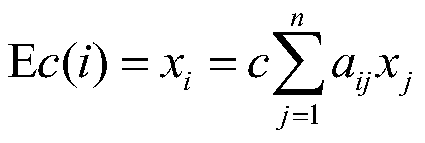Method and system for regulating and controlling solid-state fermentation based on omics integration technology and application
A solid-state fermentation and omics technology, applied in the fields of genomics, proteomics, informatics, etc., can solve the problems of inability to achieve effective integration of multi-omics data and single function
- Summary
- Abstract
- Description
- Claims
- Application Information
AI Technical Summary
Problems solved by technology
Method used
Image
Examples
Embodiment 1
[0083] The metabolic modules of acetoin in Shanxi mature vinegar were analyzed.
[0084] The genome, transcriptome and proteome were detected on the samples of Shanxi mature vinegar acetic acid fermentation stage 1 day, 3 days, 5 days, 7 days and 9 days. Through the comparison of KEGG database, a total of 18500 compounds and 11144 reactions were obtained. 7524 kinds of enzymes, a total of 341 microorganisms, map the succession process of genome-scale omics data. Taking acetoin as the center, screen the network diameter within 50, node degree > 5, network density > 0.4, network connectivity > 3, eigenvector centrality > 0.3, and include acetoin in the Q Modularity modular division within the module network.
[0085] According to the statistical method, the compounds, enzymes and genes satisfying the top 100 correlations with acetoin in partial least squares regression analysis, partial least squares discriminant analysis and orthogonal partial least squares regression analysis...
Embodiment 2
[0087] Omics detection of laboratory soy sauce solid-state fermentation process. A total of 10,144 reactions and 7,524 enzymes were detected, and the dominant bacteria in the system belonged to Weissella (Weissella), Staplococcus (staphylococcus), Pediococcus (micrococcus), Lactobacillus (Lactobacillus), Bacillus (Bacillus) and other bacteria belongs to. At the genus level, soy sauce microorganisms contained 184 bacterial genera and 116 fungal genera. Use these compounds to map the succession process of genome-scale omics data. With 4-ethylguaiacol as the center, screen the network diameter within 50, node degree > 5, network density > 0.4, network connectivity > 3, eigenvector centrality > 0.3, modularized by Q Modularity Network of modules including 4-ethylguaiacol.
[0088] Simultaneously meet the requirements of the top 100 compounds, enzymes and genes related to acetoin in partial least squares regression analysis, partial least squares discriminant analysis and orthog...
Embodiment 3
[0090] A total of 9,986 reactions and 6,548 enzymes were detected in laboratory solid-state fermentation liquor fermented grains. At the genus level, brewing microorganisms include 168 bacterial genera and 104 fungal genera. Use these compounds to map the succession process of genome-scale omics data. With tetramethylpyrazine as the center, screen the network with a diameter of less than 50, node degree > 5, network density > 0.2, network connectivity > 6, eigenvector centrality > 0.2, and include phenylethanol after Q Modularity modular division within the module network.
[0091] Simultaneously satisfy the top 100 compounds, enzymes and genes related to acetoin in the partial least squares regression analysis, partial least squares discriminant analysis and orthogonal partial least squares regression analysis analysis, and finally screen out the synthesis of phenylethanol core module. The specific implementation method of partial least squares regression analysis, partial ...
PUM
 Login to View More
Login to View More Abstract
Description
Claims
Application Information
 Login to View More
Login to View More - R&D
- Intellectual Property
- Life Sciences
- Materials
- Tech Scout
- Unparalleled Data Quality
- Higher Quality Content
- 60% Fewer Hallucinations
Browse by: Latest US Patents, China's latest patents, Technical Efficacy Thesaurus, Application Domain, Technology Topic, Popular Technical Reports.
© 2025 PatSnap. All rights reserved.Legal|Privacy policy|Modern Slavery Act Transparency Statement|Sitemap|About US| Contact US: help@patsnap.com

